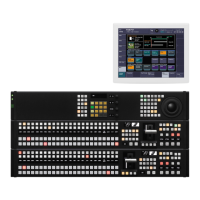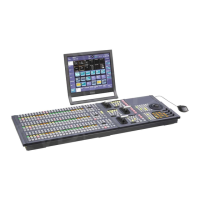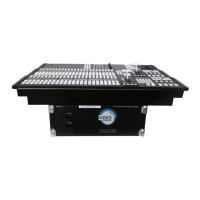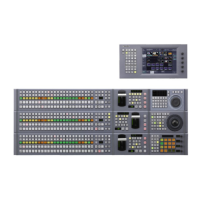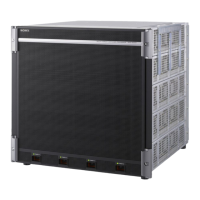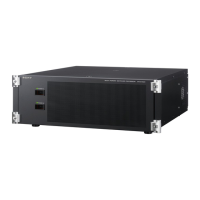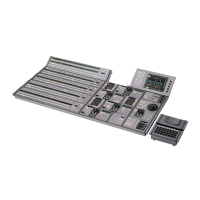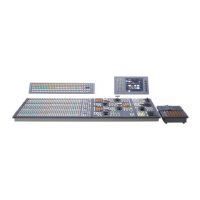Frame memory
source bus 1
Frame memory
source bus 2
Frame Memory
Chapter
7
Overview
Frame memory is a function whereby a frame of input
video can be frozen and written to memory, for further use
as material for editing.
You can also play recorded frame memory clips (movies).
Frame capacity
The following tables show the maximum number of
images that can be written to the memory.
HD system:
SD system:
For details about the method of operation,
1
“Still Image
Operations” (p. 127).
Types of image and terminology used
The following types of image are handled in frame
memory.
Freeze image: An input image that has been frozen (status
before being saved to memory).
Still image: A freeze frame that has been saved to memory
as a file. Each file (still file) holds just one still image.
Frame memory clip: A clip consists of a sequence of still
images, which appears as a movie on playback. In this
manual this is also referred to simply as a “clip.” The
files (still files) constituting clips are referred to as a
“clip file.”
When the above distinctions are not being made, an image
is simply referred to as an “image.”
Frame memory output
There are eight frame memory channels, FM1 to FM8, and
each channel independently allows a freeze image to be
saved or recalled.
By allocating FM1 to FM8 to cross-point buttons you can
use the still image output or clip output from each channel
as input material.
Correspondence between input and output
There are two buses for capturing frame memory material:
the frame memory source bus 1 and the frame memory
source bus 2.
These input buses are used by allocation to one of the pairs
of output, FM1&2, FM3&4, FM5&6, or FM7&8. You can
freeze a frame in each channel separately, or freeze in the
two channels simultaneously.
The source buses allocated to FM1 to FM8 are as follows.

